| |
Shades of Stonehenge at a Middle Tennessee state park
By Tom Adkinson
September 17, 2021
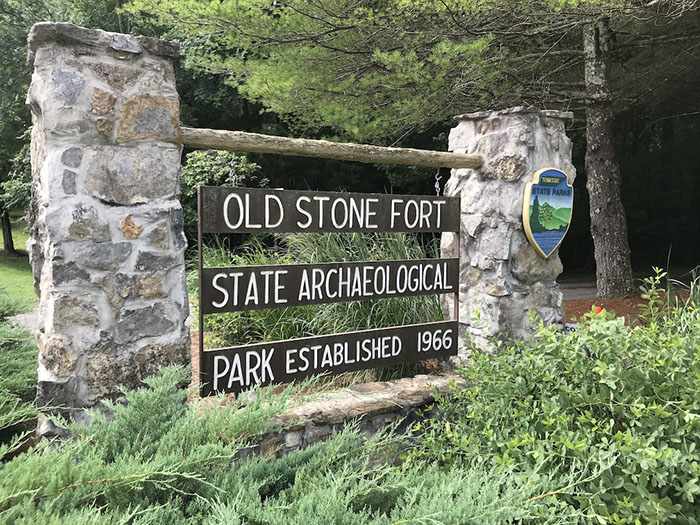
Old Stone Fort State Archaeological Park is one of two in the system devoted to Native American ceremonial sites. Image by Tom Adkinson |
MANCHESTER, Tennessee – If we could transport ourselves back 2,000 years in what today is Middle Tennessee, it’s possible that ceremonial preparations were underway for the autumnal equinox, the day when daylight and dark are exactly the same (September 22 this year).
The ceremony site, inappropriately named the Old Stone Fort many centuries later, is an intriguing work of prehistoric construction at the confluence of two rivers. It is preserved for reflection and outdoor recreation as Old Stone Fort Archeological State Park.
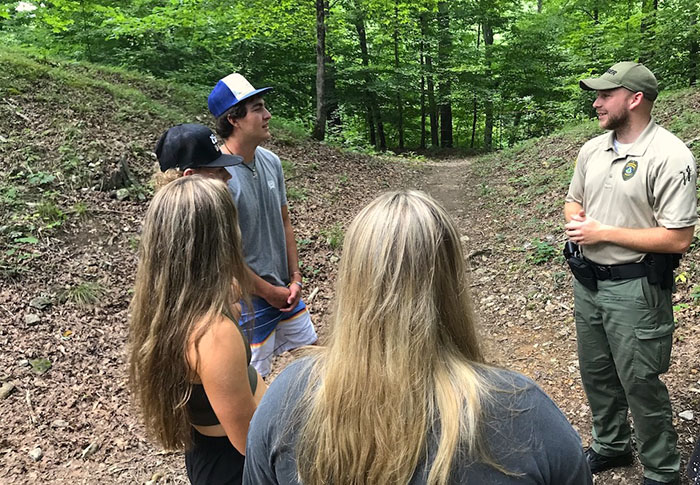
Ranger Eric Collins stands in a gap between two 2,000-year-old mounds to visit with a group of hikers. Image by Tom Adkinson |
European-American explorers, hunters and settlers came across this site starting in the 1700s. They ginned up numerous origin stories for this 50-acre complex of strategically located earthen mounds and walls, none of which involved Native Americans.
They couldn’t grasp the idea that productive and complex non-European societies had lived here for millennia and were capable of such projects.
No, Vikings didn’t build it. Neither did Welsh explorers, Hernando de Soto’s soldiers or a lost tribe of Israel.
The fact the European-Americans called the complex a fort is another reflection of their narrow perspective on the world.
It actually was a religious or ceremonial site, not a defensive site, according to modern archaeologists. At a narrow neck of land between the Duck River and the Little Duck River, Native Americans built a set of mounds oriented to within one degree of the summer solstice sunrise. Shades of Stonehenge.
Construction took place over several centuries, making the idea that de Soto’s soldiers built the mounds and walls in the brief time they meandered nearby in 1540 quite silly.
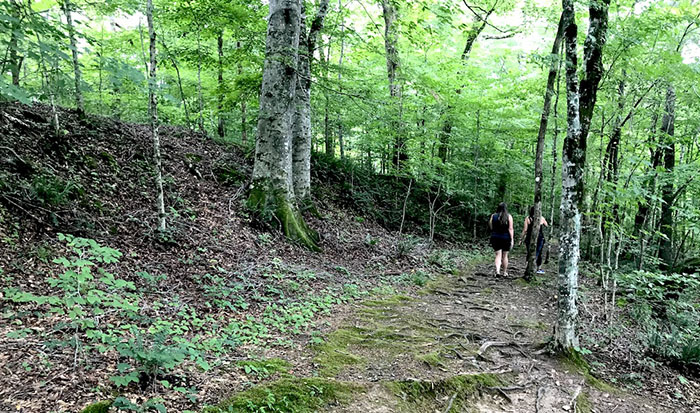
The raised earth to the left of these hikers is part of a massive structure built by Native Americans 1,500 to 2,000 years ago. Image by Tom Adkinson |
You can grasp the scale of the project on an easy 1.4-mile loop trail. Chalk up some more miles by enjoying secondary trails, easing up and down slopes to the rivers and roam through the flat 50-acre enclosure the fort’s walls create.
That enclosed area, now dotted with trees, likely was a treeless prairie when the Native Americans built the enclosure.
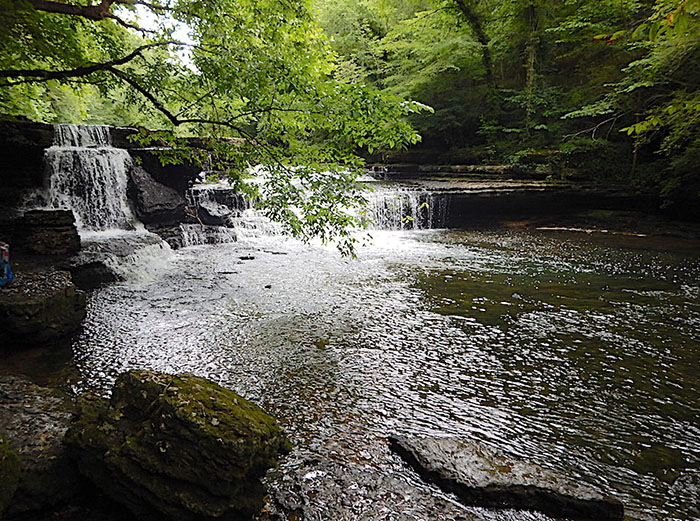
Step Falls is one of four waterfalls along the Duck River and the Little Duck River inside the park. Image by Tom Adkinson |
There are four waterfalls to find, and the power of falling water explains why this immediate area saw a considerable amount of industry in the 1800s. Examples were a short-lived Confederate gunpowder mill, a paper mill that supplied newspapers as far away as Memphis and a mill that made brown wrapping paper.
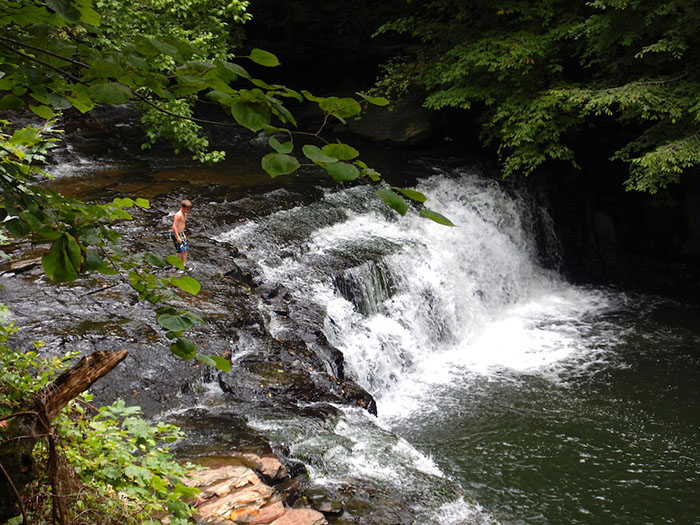
A youngster treads carefully on a portion of Step Falls before shying away from the edge. Image by Tom Adkinson |
Side trails lead to the waterfalls, almost all with steep descents. Elsewhere along the main trail, there are near-vertical cliffs at least 100 feet high – great for viewing, not so great if you have vertigo.
One of the more understated be-careful-outdoors signs reads this way: “Please be aware of the trailside cliffs. They have not proved dangerous with normal levels of precaution.”
A museum built into a hillside outside the fort enclosure provides in-depth explanations of the Native American societies that build this and other mound complexes in several states, and it shows how professional archaeologists do their work. University of Tennessee archaeologists did the most extensive research on the site.
One museum display provides a clear view of stratification research – carefully digging down era by era. The top of the display features a Snickers wrapper, a beer can and part of a glass jar (none older than 1950), while the deepest layer has animal bones and projectile points dating to 500 B.C.E.
While in the museum, ask ranger Eric Collins or another staffer whether you can say hello to Oginalli, a corn snake that is a hit with youngsters learning to understand the natural world.
The rest of the park contains 40 picnic tables, a picnic shelter and a 51-site campground with water and electrical hookups.
Manchester (population approximately 11,000) is only a couple of miles away and includes a variety of locally owned restaurants if you choose to avoid chain establishments.
The site became Old Stone Fort State Archaeological Park in 1966, protecting it from any major changes. Tennessee’s only other archaeological state park is Pinson Mounds State Archaeological Park near Jackson. It, too, is a Native American mound complex built at roughly the same time – 1,500 to 2,000 years ago.
|

